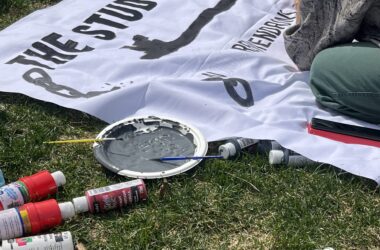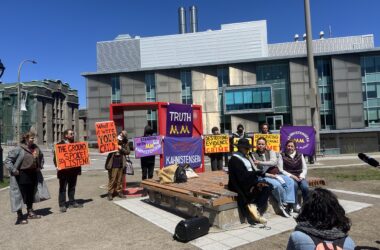
A study conducted by researchers at the McGill University Health Centre has determined that cannabis can be an effective method of pain relief for patients suffering from neuropathic pain. The study, recently published in the Canadian Medical Association Journal, has added to the heated debate over the use of cannabis as a medical treatment.
Lead by Dr. Mark Ware, associate professor of anaesthesiology and family medicine and the director of clinical research at the MUHC’s Alan Edwards Pain Management Unit, the study researched the effects of supplying varying amounts of tetrahydrocannabinol (THC)-the active ingredient in cannabis-in 25 milligrams of inhaled cannabis to 23 patients. The trials showed that when patients received the most potent of the samples-9.4 per cent THC-they reported the most significant reduction in pain as well as an enhanced ability to fall asleep and sleep more soundly.
Through research and appropriate application, scientists are hoping to alter the public’s perception of the use of cannabis for medical purposes. The goal is to better understand the positive effects of the substance in patients, and how to access these benefits.
“The challenge is to find ways to harness that system for therapeutic value,” Ware said. “This is a very scientific and medical approach. A lot of people won’t consider use [of cannabis] because of its association with recreational use.”
While researchers strive to understand more about the use of cannabis in the world of medicine, some patients aren’t waiting for the research to tell them about its pain-relieving effects.
“We have published surveys that say 10-15 per cent of patients coming to this clinic are already using it,” Ware said.
Gabriella Gobbi, an associate professor in the department of psychiatry and a researcher at the MUHC, released a study in 2009 about the long-term effects of marijuana on adolescents. The study concluded that long-term marijuana use could lead to a decrease in serotonin transmission and an increase in norepinephrine transmission, the latter of which could lead to mood disorders and greater susceptibility to stress.
However, Gobbi supports the use of cannabis for medical purposes as well as the research of cannabinoid-derived medicine that will allow doctors to make new discoveries in medicine.
“Cannabis is a medicine with pharmaceutical properties and side effects,” Gobbi said. “Cannabis should be used as a medicine, [and] not for recreational use.”
Blair T. Longley, registered leader of the Marijuana Party of Canada, was happy to know doctors have begun to make strides in the field of medicinal cannabis, but said he was not surprised by the results of the study.
“It’s sledgehammer science, proving things that have been known for thousands of years,” Longley said. “You don’t really need to prove this to anybody who has firsthand experience with treating pain or insomnia with marijuana.”
While the potential of cannabis as a medical treatment sounds promising, researchers said it should not be thought of as a new miracle drug.
“It’s certainly not a drug that is going to work for everybody,” Ware said. “It’s not a class of compounds that will be effective with every condition. It’s not a magic drug. It’s going to have its uses with certain patients with certain conditions. The challenge is to figure out which ones those are and to provide evidence.”
Board’s constitution, which require that the administration consult students and the Board before making major changes.
Among several changes, one of the biggest adjustments for the proposed Athletics Advisory Board would involve the budget approval system.
“[The former board] had a huge say over the budget,” Abaki said. “The budget couldn’t go to the Board of Governors before it was approved by the Athletics Board. In the new structure, since it’s an advisory board, the athletics director can pretty much do whatever he likes.”
Abaki said that this change is especially worrisome because students fund athletics entirely through ancillary funds.
“Students fund athletics services entirely, and for students not to have a say in where the money goes … it’s just not right,” he said. “Since students fund these services, they should have been consulted-so it violates, of course, the Charter of Students’ Rights.”
Abaki also expressed concern over the possible lack of accountability for the athletics director if the Athletics Board does not have as much power as it did in previous years.
Drew Love, McGill’s executive director of athletics and recreation, said he sees the situation differently.
“It doesn’t change my accountability at all because I continue to report through the Deputy Provost,” Love said. “All of the annual operating budgets that I prepare are presented through his office and on to the Board of Governors as part of a roll up of all budgets. I think in the end, the same student voice will be heard and a balanced representation is there on the new board.”
Abaki sees this move by the administration as a continuation of what he described as the “administration versus governance argument.” Abaki explained that the administration believes it should be separate from governance so that it would be free to make budgetary decisions without consulting the student representatives.
“The Deputy Provost basically told us that consultation on budgetary issues is not the direction in which the administration is moving,” Abaki said. “By and large they do not want to consult students when it involves money.”
On the other hand, Love explained that McGill has been spending time reviewing the terms of reference for various committees to ensure that they were relevant and well drafted. Love said there were concerns that the original terms of reference of the Athletics Board had no real reporting or accountability structure.
“The changes that were designed were there to insure that students continued to have a balanced, represented position on the Board, but that the terms were written up as they correctly should be: as an advisory board, and not [to] have the appearance of a stand alone corporate entity, which it never had, but some people may have perceived it to be,” Love said.
“In summary, we find it troubling that students were consulted only as an afterthought and were not involved in the process of drafting the new structures,” added Abaki in his memo to Mendelson. “These are the same students who have been incredibly kind in understanding the underfunded nature of the university, and who have, over the years, contributed millions to build, maintain, and refurbish our athletics facilities as well as support our athletics teams.”







